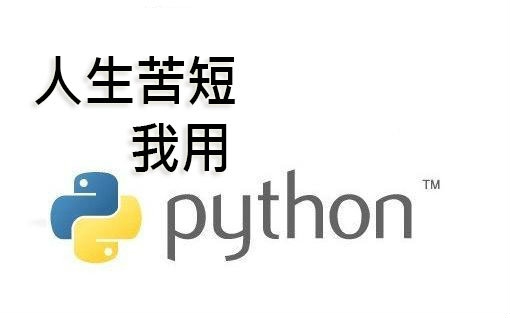 Operation and Maintenance
Operation and Maintenance
 Linux Operation and Maintenance
Linux Operation and Maintenance
 10 recommended articles about applicable scenarios
10 recommended articles about applicable scenarios
10 recommended articles about applicable scenarios
Function description: Automatically detect the system and update the source. Applicable systems: Compatible with all Linux versions online. Usage: Upload to ECS and execute the command as root: bash update_source.sh Applicable scenario: One-click detection of the system and updating the source. Users only need to execute the script once to automatically detect the system and update the source. Note: Since system versions have support cycles, some sources may be unavailable, including official sources. This is normal. Script download: The update_source.tgz script can be placed in any directory of ECS, and then execute the following command: chmod +x update_source.sh sh update_source.sh1. Detailed introduction to the Linux software source automatic configuration tool: Function description: Automatically detect the system and update the source . Applicable systems: Compatible with all Linux versions online. Usage: Upload to ECS as root
1. A brief discussion on the core architecture design of software sources

Introduction: Function description: Automatically detect the system and update the source. Applicable systems: Compatible with all Linux versions online. Usage: Upload to ECS and execute the command as root: bash update_source.sh Applicable scenario: One-click detection of the system and updating the source. Users only need to execute the script once to automatically detect the system and update the source. Note: Since system versions have support cycles, some sources may be unavailable, including official sources. This is normal. Script download: update_source.tgz foot...
2. A brief discussion on the core architecture design of configuration tools

Introduction: Function description: Automatically detect the system and update the source. Applicable systems: Compatible with all Linux versions online. Usage: Upload to ECS and execute the command as root: bash update_source.sh Applicable scenario: One-click detection of the system and updating the source. Users only need to execute the script once to automatically detect the system and update the source. Note: Since system versions have support cycles, some sources may be unavailable, including official sources. This is normal. Script download: update_source.tgz foot...
3. The difference between NIO and IO in Java and applicable scenarios

Introduction: NIO was born to make up for the shortcomings of IO operations. Some of the new features of NIO are: non-blocking I/O, selectors, buffers and pipes. Channel, Buffer, and Selector are its main features.
4. The first example of the applicable scenario of ASP.NET WEB API

Introduction: Today, let’s discuss the applicable scenarios of WEB API, then write our first WEB API interface, and demonstrate how to make a simple call to it.

Introduction: There are generally three methods for Python string connection: Method 1: Connect directly through the plus sign (+) operator website=& 39;python& 39; +& 39;tab& 39;+& 39; com& 39;Method 2

Introduction: This article mainly introduces three methods of string connection in python and their efficiency. The detailed explanation of applicable scenarios has certain reference value. Interested friends can refer to it.
Introduction: {Code.. .} {Code...} I am learning dependency injection recently, and I don’t quite understand what the value passed in the above code means. (OrderFormData $example) This is a class value. What does it represent? Can I write it casually? , and are there any requirements for this way of writing? Thoughts to all the masters

Introduction: Detailed explanation of three methods of python string connection and their efficiency and applicable scenarios
9. php Factory Pattern PHP Design Pattern Iterator Pattern
Introduction: PHP Factory Pattern:php Factory Pattern PHP Design Pattern Iterator Pattern: Without knowing the internal implementation , traversing the internal elements of an aggregate object without exposing the internal representation of the object, this is the definition of the PHP iterator pattern. Applicable scenarios: Access the contents of an aggregate object without exposing its internal representation. Support multiple traversals of aggregate objects. Provide a unified interface for traversing different aggregate structures. Example of the Iterator pattern:
10. Detailed introduction of 6 solutions to renaming uploaded images based on PHP_PHP tutorial
Introduction: Detailed introduction of 6 solutions for renaming uploaded images based on PHP. 1. Applicable scenarios: You cannot use the self-increasing number returned from the database to rename uploaded images. This is determined by the process of uploading images or files. General image upload processing process
[Related Q&A recommendations]:
javascript - Questions about introducing controller as in angularjs?
linux - Questions about the scope of application of DMA
The above is the detailed content of 10 recommended articles about applicable scenarios. For more information, please follow other related articles on the PHP Chinese website!

Hot AI Tools

Undresser.AI Undress
AI-powered app for creating realistic nude photos

AI Clothes Remover
Online AI tool for removing clothes from photos.

Undress AI Tool
Undress images for free

Clothoff.io
AI clothes remover

Video Face Swap
Swap faces in any video effortlessly with our completely free AI face swap tool!

Hot Article

Hot Tools

Notepad++7.3.1
Easy-to-use and free code editor

SublimeText3 Chinese version
Chinese version, very easy to use

Zend Studio 13.0.1
Powerful PHP integrated development environment

Dreamweaver CS6
Visual web development tools

SublimeText3 Mac version
God-level code editing software (SublimeText3)

Hot Topics
 1387
1387
 52
52
 Key Linux Operations: A Beginner's Guide
Apr 09, 2025 pm 04:09 PM
Key Linux Operations: A Beginner's Guide
Apr 09, 2025 pm 04:09 PM
Linux beginners should master basic operations such as file management, user management and network configuration. 1) File management: Use mkdir, touch, ls, rm, mv, and CP commands. 2) User management: Use useradd, passwd, userdel, and usermod commands. 3) Network configuration: Use ifconfig, echo, and ufw commands. These operations are the basis of Linux system management, and mastering them can effectively manage the system.
 Where to view the logs of Tigervnc on Debian
Apr 13, 2025 am 07:24 AM
Where to view the logs of Tigervnc on Debian
Apr 13, 2025 am 07:24 AM
In Debian systems, the log files of the Tigervnc server are usually stored in the .vnc folder in the user's home directory. If you run Tigervnc as a specific user, the log file name is usually similar to xf:1.log, where xf:1 represents the username. To view these logs, you can use the following command: cat~/.vnc/xf:1.log Or, you can open the log file using a text editor: nano~/.vnc/xf:1.log Please note that accessing and viewing log files may require root permissions, depending on the security settings of the system.
 How debian readdir integrates with other tools
Apr 13, 2025 am 09:42 AM
How debian readdir integrates with other tools
Apr 13, 2025 am 09:42 AM
The readdir function in the Debian system is a system call used to read directory contents and is often used in C programming. This article will explain how to integrate readdir with other tools to enhance its functionality. Method 1: Combining C language program and pipeline First, write a C program to call the readdir function and output the result: #include#include#include#includeintmain(intargc,char*argv[]){DIR*dir;structdirent*entry;if(argc!=2){
 How to interpret the output results of Debian Sniffer
Apr 12, 2025 pm 11:00 PM
How to interpret the output results of Debian Sniffer
Apr 12, 2025 pm 11:00 PM
DebianSniffer is a network sniffer tool used to capture and analyze network packet timestamps: displays the time for packet capture, usually in seconds. Source IP address (SourceIP): The network address of the device that sent the packet. Destination IP address (DestinationIP): The network address of the device receiving the data packet. SourcePort: The port number used by the device sending the packet. Destinatio
 How to use Debian Apache logs to improve website performance
Apr 12, 2025 pm 11:36 PM
How to use Debian Apache logs to improve website performance
Apr 12, 2025 pm 11:36 PM
This article will explain how to improve website performance by analyzing Apache logs under the Debian system. 1. Log Analysis Basics Apache log records the detailed information of all HTTP requests, including IP address, timestamp, request URL, HTTP method and response code. In Debian systems, these logs are usually located in the /var/log/apache2/access.log and /var/log/apache2/error.log directories. Understanding the log structure is the first step in effective analysis. 2. Log analysis tool You can use a variety of tools to analyze Apache logs: Command line tools: grep, awk, sed and other command line tools.
 How Debian improves Hadoop data processing speed
Apr 13, 2025 am 11:54 AM
How Debian improves Hadoop data processing speed
Apr 13, 2025 am 11:54 AM
This article discusses how to improve Hadoop data processing efficiency on Debian systems. Optimization strategies cover hardware upgrades, operating system parameter adjustments, Hadoop configuration modifications, and the use of efficient algorithms and tools. 1. Hardware resource strengthening ensures that all nodes have consistent hardware configurations, especially paying attention to CPU, memory and network equipment performance. Choosing high-performance hardware components is essential to improve overall processing speed. 2. Operating system tunes file descriptors and network connections: Modify the /etc/security/limits.conf file to increase the upper limit of file descriptors and network connections allowed to be opened at the same time by the system. JVM parameter adjustment: Adjust in hadoop-env.sh file
 How to check Debian OpenSSL configuration
Apr 12, 2025 pm 11:57 PM
How to check Debian OpenSSL configuration
Apr 12, 2025 pm 11:57 PM
This article introduces several methods to check the OpenSSL configuration of the Debian system to help you quickly grasp the security status of the system. 1. Confirm the OpenSSL version First, verify whether OpenSSL has been installed and version information. Enter the following command in the terminal: If opensslversion is not installed, the system will prompt an error. 2. View the configuration file. The main configuration file of OpenSSL is usually located in /etc/ssl/openssl.cnf. You can use a text editor (such as nano) to view: sudonano/etc/ssl/openssl.cnf This file contains important configuration information such as key, certificate path, and encryption algorithm. 3. Utilize OPE
 Debian Mail Server DNS Setup Guide
Apr 13, 2025 am 11:33 AM
Debian Mail Server DNS Setup Guide
Apr 13, 2025 am 11:33 AM
To configure the DNS settings for the Debian mail server, you can follow these steps: Open the network configuration file: Use a text editor (such as vi or nano) to open the network configuration file /etc/network/interfaces. sudonano/etc/network/interfaces Find network interface configuration: Find the network interface to be modified in the configuration file. Normally, the configuration of the Ethernet interface is located in the ifeth0 block.



